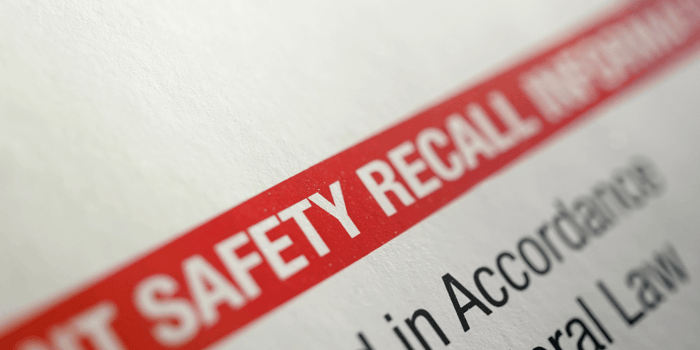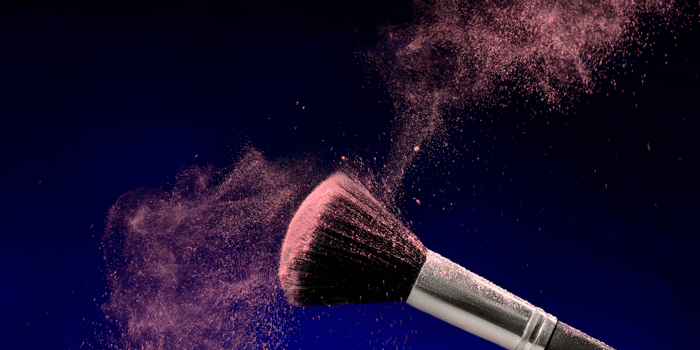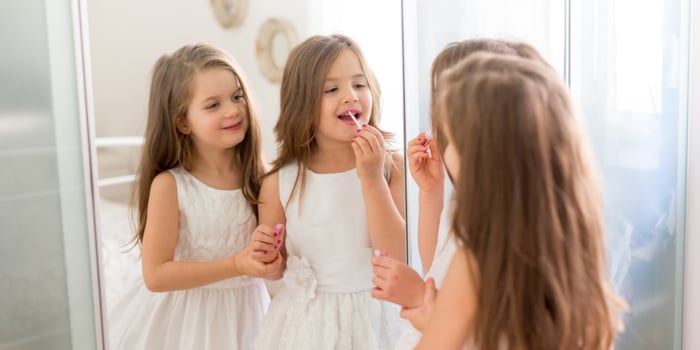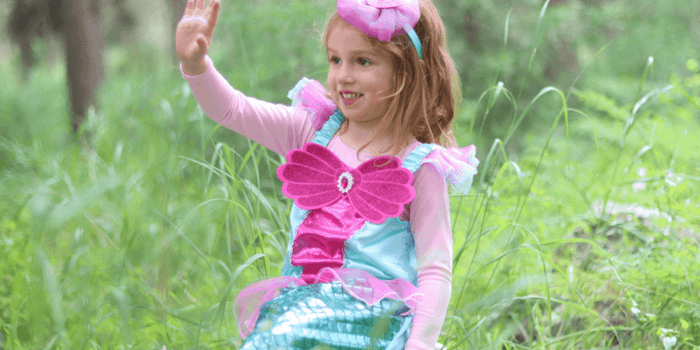Table of Contents
- Introduction: Why Talc Free Makeup Matters More Than Ever for Kids
- Scandal #1 – Claire’s Makeup Recall for Asbestos (2019)
- Scandal #2 – Justice “Just Shine” Shimmer Powder Contamination (2017)
- Scandal #3 – Beauty Plus Global / City Color Asbestos Recall (2019)
- Scandal #4 – IQ Toys “Princess Girl” Makeup Set (2019)
- Scandal #5 – FDA Import Alert 53-17 (2023)
- Scandal #6 – Toddler Hospitalized from Allergic Reaction (2017)
- Scandal #7 – Breast Cancer Prevention Partners Study (2018)
- Scandal #8 – Lead & Phthalates in Toy Makeup Kits (2021–2023)
- Conclusion: Why Talc Free Makeup Is No Longer Optional
Introduction: Why Talc Free Makeup Matters More Than Ever for Kids
Most parents assume that if something is sold in stores, labeled for children, and covered in glitter, it must be safe. But in recent years, kids’ cosmetics have been at the center of alarming safety scandals—testing positive for asbestos, lead, harmful bacteria, and hormone-disrupting chemicals. A common thread? Many of these products contained talc, a known contaminant risk when not properly regulated—prompting growing concern and demand for talc free makeup as a safer alternative.
Talc free makeup isn’t just a wellness trend—it’s a critical safety choice for families. These weren’t rare, one-off incidents. They were repeated, preventable failures that exposed just how broken the system really is when it comes to protecting kids from toxic ingredients.
In this post, we’ll explore 8 real-life scandals that revealed the hidden dangers in children’s makeup—and why switching to talc free makeup is one of the most important steps you can take as a parent.
Scandal #1 – Claire’s Makeup Recall for Asbestos (2019)
Claire’s Scandal: The Wake-Up Call That Sparked the Talc Free Makeup Movement
In 2019, the FDA issued a public safety alert after confirming the presence of asbestos in multiple children’s makeup products sold by Claire’s—a beloved accessories brand for tweens and teens. The contaminated items included Claire’s Eye Shadows, Compact Powder, and Contour Palette, all marketed with bright colors and glittery packaging designed to appeal to young girls.
Independent lab tests first detected the asbestos, and the FDA later confirmed the findings. The common denominator? Talc, a mineral frequently used in cosmetics that is often mined near asbestos deposits. Without strict regulations requiring pre-market safety testing, asbestos-contaminated talc can easily end up in consumer goods—especially those made for kids.
Claire’s denied the FDA’s results, citing its own test reports, and opted for a voluntary removal of the products instead of issuing a mandatory recall. Since the FDA doesn’t have the legal power to enforce cosmetic recalls, it could only urge consumers to stop using the affected products.
The Claire’s case became a national headline—and a turning point. It shattered the assumption that products sold in major retail chains are inherently safe. For many parents, it was the first time they realized how unregulated children’s cosmetics truly are.
This scandal helped spotlight the urgent need for talc free makeup and stronger oversight. Despite public outcry, many Claire’s products remained on store shelves long after the alert, underscoring just how little protection currently exists for children.
Scandal #2 – Justice “Just Shine” Shimmer Powder Contamination (2017)
Justice’s “Just Shine” Scandal: Another Case for Talc Free Makeup
In 2017, popular tween retailer Justice came under fire after an investigative report uncovered asbestos in one of its best-selling kids’ makeup products—the “Just Shine” Shimmer Powder. Marketed with glittery appeal and colorful packaging, the product was designed to attract young girls. But behind the sparkle was a serious threat to their health.
North Carolina’s WTVD ABC11 initiated the investigation, sending the product to a certified lab for testing as part of a segment on children’s cosmetics. The results were alarming: the powder tested positive for tremolite asbestos, a known carcinogen linked to mesothelioma, along with unsafe levels of heavy metals like lead, barium, chromium, and selenium.
These toxic substances pose serious health risks—especially for children, whose developing bodies make them more vulnerable to neurological damage and long-term illness. Once again, the ingredient at the center of the contamination was talc, reinforcing the urgent need for safer, talc free makeup options.
Justice responded by removing the product from stores and conducting their own testing, which they claimed did not detect asbestos. Still, the company issued a voluntary recall “out of an abundance of caution.” Despite this, the scandal sparked widespread concern among parents and advocacy organizations, who questioned why such dangerous ingredients were even allowed near children in the first place.
The Justice case revealed how easily brands can challenge third-party findings, shape the public narrative, and sidestep consequences. It also highlighted the lack of real enforcement—neither the FDA nor the Consumer Product Safety Commission (CPSC) had the authority to mandate a recall, even when children’s health was clearly at risk.
As with the Claire’s incident, this scandal fueled the growing demand for talc free makeup and stricter safety standards in children’s personal care products. Parents began to realize that unless they actively seek out non-toxic alternatives, their kids could unknowingly be exposed to harmful chemicals—just by playing dress-up.
Scandal #3 – Beauty Plus Global / City Color Asbestos Recall (2019)
Beauty Plus Global Recall: Asbestos in Budget Cosmetics and the Need for Talc Free Makeup
In 2019, the FDA issued another public safety warning—this time about asbestos contamination in cosmetics sold by Beauty Plus Global, a distributor behind several budget beauty brands including City Color. The affected products included City Color’s Collection Contour Effects Palette 2, Matte Blushes, and Bronzers—popular items among teens, often found at deep discounts in stores like TJ Maxx, Marshalls, and Ross, or sold online through Amazon and independent beauty retailers.
The contamination was uncovered through the FDA’s Talc Safety Sampling Assignment, a program launched in the wake of the Claire’s and Justice scandals to investigate the risk of asbestos in talc-containing cosmetics. Lab results confirmed the presence of asbestos fibers in multiple formulas made by Beauty Plus Global. The source? Once again, untested talc—the common denominator in a growing list of unsafe products.
The company voluntarily recalled nine contaminated products, but with no mandatory requirement to notify customers or issue public alerts, most parents and teens never saw the FDA’s warning. By the time the recall was issued, many of the products had already been sold—and were likely still in makeup bags across the country.
This scandal matters because it confirmed that even smaller or lesser-known brands contribute to the exposure risk—and that these products are still making it into the hands of teens and tweens, many of whom are using bronzers, blushes, and contour palettes without any awareness of what’s inside.
Once again, this case reinforced a disturbing pattern: products containing talc are not consistently tested before sale, and safety concerns often arise only after harm is suspected. The growing number of incidents like this is fueling the demand for talc free makeup—not just as a beauty trend, but as a safer standard for kids and teens.
Scandal #4 – IQ Toys “Princess Girl” Makeup Set (2019)
IQ Toys “Princess Girl” Makeup Set (2019): The Danger of Labeling Makeup as Toys
In 2019, the “Princess Girl’s All-in-One Deluxe Makeup Palette” by IQ Toys was found to contain over 4 million asbestos fibers per gram—a deeply alarming level of contamination for a product marketed to children. The finding came from independent lab testing commissioned by the Environmental Working Group (EWG), a nonprofit organization focused on public health and consumer safety.
What made this case especially disturbing was how the product was sold. It was marketed as a toy, not a cosmetic, and featured bright, playful packaging aimed at very young girls. Sold widely on Amazon, Walmart.com, and eBay—often by third-party overseas sellers—the palette appeared innocent on the surface. But the makeup inside, including talc-based eyeshadow and blush, contained tremolite asbestos, a carcinogen known to cause mesothelioma and lung disease even at low exposure levels.
Because the product was labeled as a “toy,” it fell under the oversight of the Consumer Product Safety Commission (CPSC), not the FDA. That distinction allowed it to bypass ingredient disclosure rules and cosmetic safety testing. In other words, this was real makeup being sold under toy regulations—with none of the protections that should apply to products used near a child’s eyes or skin.
This scandal shines a harsh light on a massive regulatory loophole: when cosmetics for kids are disguised as toys, they evade oversight completely. It’s not a legal gray area—it’s a common practice. And unless parents are actively seeking talc free makeup, they may unknowingly purchase products contaminated with asbestos.
The Princess Girl palette was never recalled nationwide. Most parents never saw the EWG’s report, and no government agency stepped in to force retailers to remove the product. It remains one of the clearest and most troubling examples of how dangerous ingredients can reach children’s faces unchecked.
Scandal #5 – FDA Import Alert 53-17 (2023)
FDA Import Alert 53-17 (2023): Unsafe Imports and the Need for Ingredient Transparency
In May 2023, the FDA issued Import Alert 53-17, flagging dozens of foreign-manufactured cosmetic products—including children’s play makeup sets—after routine testing uncovered microbiological contamination and undeclared allergens. These products were primarily sold through major online marketplaces like Amazon, Shein, Temu, and Wish, as well as in discount stores such as Dollar Tree and Five Below.
Among the identified contaminants were dangerous bacteria like Staphylococcus and Pseudomonas, as well as yeast and mold colonies—all of which can pose serious health risks when applied near the eyes, mouth, or broken skin. In addition, several products contained allergenic preservatives and undeclared ingredients, violating even the most basic consumer safety standards.
The most troubling part? These products were labeled and imported as “toys,” not cosmetics. That classification allowed them to bypass FDA oversight entirely. Since the Consumer Product Safety Commission (CPSC) regulates toys—not cosmetic ingredients—these products entered the U.S. market without safety testing, ingredient transparency, or compliance with cosmetic regulations.
Import Alert 53-17 gave customs officials the authority to detain shipments from listed manufacturers without physical examination unless safety could be verified. However, the alert covered only a limited number of sources, meaning that many nearly identical products from unlisted manufacturers continued to reach consumers.
This scandal confirmed what clean beauty advocates have long warned: the children’s cosmetics market is flooded with unsafe, imported products disguised as toys to exploit regulatory loopholes. And while the FDA's alert is a step in the right direction, it’s a reactive measure—not a preventative one.
For parents seeking talc free makeup and genuinely safe alternatives, this case is yet another reminder that labels and packaging can't be trusted at face value. Ingredient safety and regulatory enforcement still lag far behind the marketing tactics used to target kids.
Scandal #6 – Toddler Hospitalized from Allergic Reaction (2017)
Toddler Hospitalized After Using Children’s Makeup (2017): A Wake-Up Call for Safer Standards
In late 2017, a mother from Illinois shared a terrifying ordeal that quickly made national headlines: her 3-year-old daughter was hospitalized with a severe allergic reaction after using a children’s makeup set she had received as a gift. The kit, purchased from a Family Dollar store, included lip gloss, eye shadow, blush, and nail polish—packaged in a colorful case and marketed as “safe for kids.”
Within hours of application, the toddler developed red, swollen eyes, painful blisters, and a rash that spread across her face and body. She was rushed to the hospital, where doctors treated her for a serious allergic reaction to ingredients in the product.
What shocked the mother—and many parents following the story—was that the makeup was purchased from a mainstream retailer and didn’t include a full ingredient list. No recall was issued, and no government agency launched an investigation. The product remained on shelves.
Doctors later identified six known skin irritants and allergens in the makeup, including synthetic dyes, harsh preservatives, and undisclosed fragrance blends. Under U.S. law, manufacturers are not required to list individual components of a fragrance, allowing multiple harmful chemicals to be hidden under a single word: “fragrance.”
This story resonated deeply with parents because it felt so familiar. The makeup wasn’t bought from an obscure overseas site—it came from a store many families shop at regularly. The child wasn’t experimenting alone—her mother helped her apply it. Yet within minutes, the result was a medical emergency.
This case reinforced two disturbing realities:
Children’s cosmetics are not required to undergo safety testing before being sold.
Full ingredient transparency is not legally required, especially for fragrance components.
For families seeking talc free makeup and truly safe alternatives, this incident served as a painful reminder that low-cost, mainstream products marketed to kids can still contain hidden dangers. And without regulation, it’s up to parents to research, scrutinize, and choose products that prioritize safety over flashy packaging.
Scandal #7 – Breast Cancer Prevention Partners Study (2018)
Breast Cancer Prevention Partners Study (2018): Toxic Chemicals Found in 100% of Kids’ Makeup Tested
In 2018, Breast Cancer Prevention Partners (BCPP) released a groundbreaking study that sent shockwaves through the clean beauty and public health communities. After testing a range of children’s cosmetic products—including lip glosses, eyeshadows, glitter gels, and body sprays—researchers found that 100% of the items contained at least one chemical linked to cancer, hormone disruption, or developmental harm.
The products tested were not obscure imports. They were affordable, mainstream items sold in stores like Dollar Tree, Dollar General, and 99 Cents Only Stores—places where many families shop for budget-friendly kids’ makeup and personal care. Most were marketed directly to girls under 12, often with glittery, colorful packaging and playful branding.
Among the most concerning ingredients detected were:
Parabens – preservatives linked to early puberty, hormone disruption, and increased breast cancer risk
Phthalates – commonly found in synthetic fragrances, associated with reproductive and developmental toxicity
Synthetic fragrance blends – which may contain dozens to hundreds of undisclosed chemicals that can trigger allergies, asthma, and endocrine disruption
Formaldehyde-releasing preservatives – known human carcinogens used to extend shelf life
Perhaps most disturbing, many of these toxic ingredients were not listed on the labels. Loopholes in U.S. cosmetic regulations allow manufacturers to hide harmful substances under vague terms like “fragrance” or “parfum,” preventing parents from making informed decisions.
Unlike the other scandals on this list, the BCPP study wasn’t tied to a single product or recall. It was a wide-angle snapshot of an industry-wide problem: toxic exposure is systemic in kids’ cosmetics—not a one-off mistake.
For parents seeking talc free makeup and genuinely safe alternatives, this study offered scientific confirmation of long-standing fears. It reinforced the need for stronger regulations, transparent labeling, and independent safety verification—especially when products are being marketed to young children.
Scandal #8 – Lead & Phthalates in Toy Makeup Kits (2021–2023)
Lead and Phthalates in Toy Makeup Kits (2021–2023): When “Play” Becomes a Health Hazard
Between 2021 and 2023, multiple toy makeup kits marketed to children were recalled across the U.S. and Canada after lab testing revealed illegal levels of lead, phthalates, and other banned substances. These products, often sold under names like Princess Girl, Rainbow Fairy, and My Little Makeup Set, included items such as lip gloss, nail polish, glitter gels, and toy perfumes—packaged to look like real cosmetics but labeled as toys to avoid stricter regulations.
Many of these kits were sold at familiar retailers like Dollar Tree, Five Below, and Family Dollar, as well as on major e-commerce platforms including Amazon, Walmart.com, and eBay. For many parents, their availability at trusted stores created a false sense of safety.
In one significant case, the U.S. Consumer Product Safety Commission (CPSC) recalled over 20,000 units of a children’s cosmetic set imported from China after testing revealed lead levels exceeding federal limits. Lead is a powerful neurotoxin that can cause irreversible brain damage, developmental delays, and learning disabilities in children.
Other recalled kits were found to contain banned phthalates—chemicals used to soften plastic and create texture in glosses and gels. Phthalates are linked to hormone disruption, reproductive harm, and behavioral problems, and are banned from toys under the Consumer Product Safety Improvement Act (CPSIA). Yet, many of these imported products still make it through customs due to limited pre-market oversight.
What made these cases even more concerning was the lack of ingredient transparency. Many of the products included no full ingredient list—or worse, came with packaging that was poorly translated, misleading, or incomplete, leaving parents unaware of the real risks.
These incidents confirmed what clean beauty advocates have long emphasized: the danger isn’t just from obscure or “cheap” brands—it’s systemic. Even mass-market retailers can unknowingly sell toxic products when cosmetics are disguised as toys and fall through regulatory cracks.
Conclusion: Why Talc Free Makeup Is No Longer Optional
From asbestos contamination and hidden allergens to lead-laced lip gloss and banned phthalates, these eight real-world scandals reveal a chilling truth: the cosmetics marketed to our children are not held to the safety standards most parents assume.
Many of these products were sold at national retailers, labeled as toys, or marketed with glittery, kid-friendly branding—yet they contained ingredients known to harm developing bodies. Worse, most of them weren’t even subject to recalls, and many remained on store shelves long after the danger was confirmed.
What these cases have in common is a complete lack of oversight, transparency, and accountability. Until regulations catch up, it’s up to parents to read labels, avoid vague ingredient lists like “fragrance,” and seek out talc free makeup that has been independently vetted for safety.
Popsicle Beauty Club: A Safer Way to Play
At Popsicle Beauty Club, we’re moms, too. And we believe kids deserve safe, joyful, creative play—without toxic tradeoffs. Choosing talc free makeup isn’t about fear—it’s about empowerment. That’s why we curate only the cleanest, cutest beauty and personal care products for girls, all from mom-founded, ingredient-conscious brands that meet our strict safety standards.
No talc. No heavy metals. No hormone disruptors.
Just clean, colorful fun you can feel good about.
Popsicle Beauty Club. Retail you can trust.
Want to understand the science and ethics behind clean beauty? Read The Science & Ethics Behind Non-Toxic Beauty to explore what makes a product truly non-toxic and how to navigate misleading labels.

About the Author: Rebecca is a Penn State–educated entrepreneur and mom of six, with a career spanning renewable energy, hydrogen fuel innovation, and plant-based wellness. She’s the founder of Popsicle Beauty Club, a clean, non-toxic self-care brand for kids rooted in ingredient safety and environmental responsibility. To learn more or connect, you can find Rebecca on LinkedIn.







 Assets (13).png)







